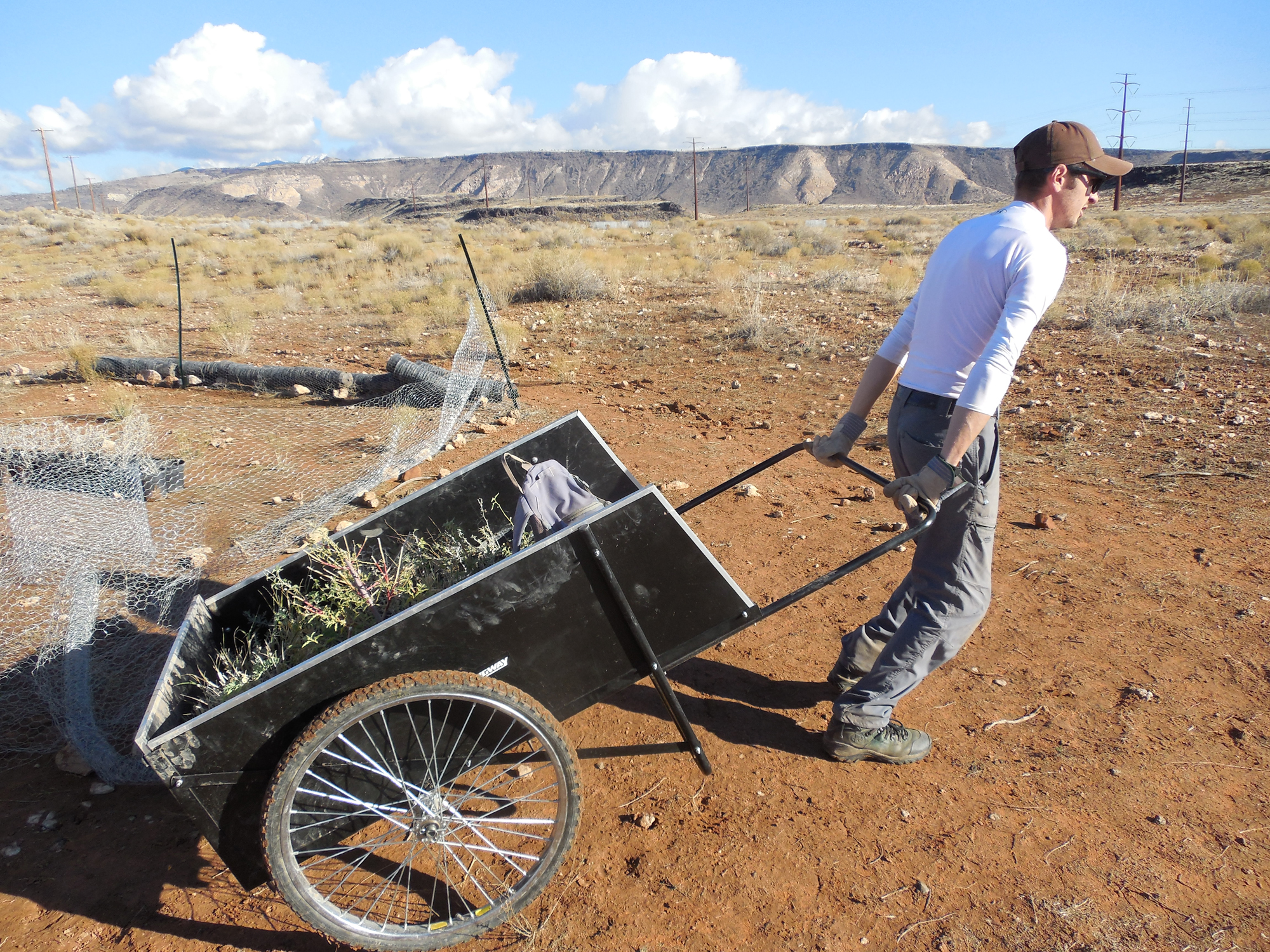
ST. GEORGE — Wildlife officials told the Habitat Conservation Advisory Committee Tuesday that it was too early to determine the extent of the damage done to the Mohave desert tortoise population from two recent fires that torched 14,000 acres across protected tortoise habitat.

The committee of local, state and federal officials who make up the body overseeing the Habitat Conservation Plan within the Red Cliffs Desert Reserve heard reports concerning the aftermaths of the recent Cottonwood Trail Fire and Turkey Farm Road Fires that burned through the reserve.
“We’ve had a few fires throughout the county,” Hurricane Valley Fire Chief Tom Kuhlmann told the committee, and showed a slide of several locations across the county where fires large and small had ignited.
The Cottonwood Trail Fire torched an estimated 1,600 acres and the Turkey Farm Road Fire burned nearly 12,000 acres within the desert reserve. Together with various other fires that have popped up this season and burned into parts of the reserve, an estimated 14,000 acres of tortoise habitat were burned and destroyed.
It is unknown at this point how many desert tortoises may have been killed in the fire. In order to get an idea of the impact the fire has had on the tortoise population, mortality surveys are being conducted by federal and state officials.

Across the torched portions of the reserve, Mike Schijf, a biologist of the HCP, said there could be between 500 and 800 tortoises residing in the area.
Federal Wildlife Biologist John Kellam and others have been doing mortality surveys in the reserve, which is overseen by the Bureau of Land Management. Thus far, he told the committee they hadn’t encountered any dead tortoises. As for estimating what the overall mortality rate might be, he said it was “too early to tell.”
Schijf and Cameron Rognan, the Red Cliffs Desert Reserve administrator, said they had also done some basic surveys but were also hoping to gain more volunteers to help with the process.
“We’ve been hearing a lot from the general public of what they might be able to do to help out post-fire,” Schijf said. “We could get more eyes out there, maybe see if there are any tortoises in need. It could be another way to assess mortality as well.”
Wildfires in 2005 and 2006 destroyed an estimated 25% of desert tortoise habitat in the reserve and killed 15% of the tortoise population at the time. While it is believed some tortoises were likely caught in the fire, others may yet die due to starvation. This would occur due to the usual tortoise forage having been turned to ash.

“I honestly wish there was an easy solution,” Rognan said. “There’s little we can do in regard to directly feeding the tortoises.”
The desert tortoises are so spread out and not likely to move toward a central feeding location, Rognan said.
Because of that, committee chair Chris Blake asked if the HCP should expect a large die off of tortoises in the near future.
“We really can’t say what the mortality looks like from this fire,” Rognan said, adding it may be years before the true impact of the fire on the tortoise population is realized.
The problem is that the tortoises may enter their winter hibernation without having eaten what they needed beforehand and may simply not wake up, Rognan said. This impact to the tortoise population will not be seen until next year.
On the question of habitat restoration, the BLM has applied for federal emergency relief funds to help pay for reseeding efforts in the reserve.

Other reseeding efforts to help replenish the tortoise food source were covered as well, yet issues of when to seed arose. A major factor in regrowing plants and getting the tortoise population food will largely hinge on when the monsoon and other seasonal rains come.
If the rains don’t come, Kellan said all they’d be doing with reseeding efforts is feeding rodents.
Despite the uncertainty of when the rains may come, reseeding and other restoration and replanting efforts will be pursued in order to safeguard the desert tortoise.
While restoring the areas destroyed by the fires is a priority for the HCP committee and administration, Rognan said he was worried about dealing with what he felt was the major threat to those restoration efforts – invasive cheatgrass.
Cheatgrass dries out quickly, is highly flammable and burns fast. If that problem isn’t dealt with somehow, Rognan said he wasn’t optimistic about the ultimate outcome.
“We can restore as much as much as we can restore, but if it’s going to burn every five to 10 years, it seems like it’s a losing battle,” Rognan said, referring to the 2005 and 2006 fires. “We’re at the point we need to look at other options.”

One of the proposed ways to prevent future fires was using a mover to cut down the brush – like cheatgrass – that accumulates along the roadside.
At the moment, the desert reserve doesn’t have a mower for this purpose. And the one that Washington County or the Utah Department of Transportation would use has to be loaned to them by the state. By the time that usually happens, the fire danger is already high, Kuhlmann said.
While a mower and related equipment could cost up to $100,000 or more, the idea of procuring one for use by the HCP and possibly other entities in the county was received well by the committee.
Copyright St. George News, SaintGeorgeUtah.com LLC, 2020, all rights reserved.